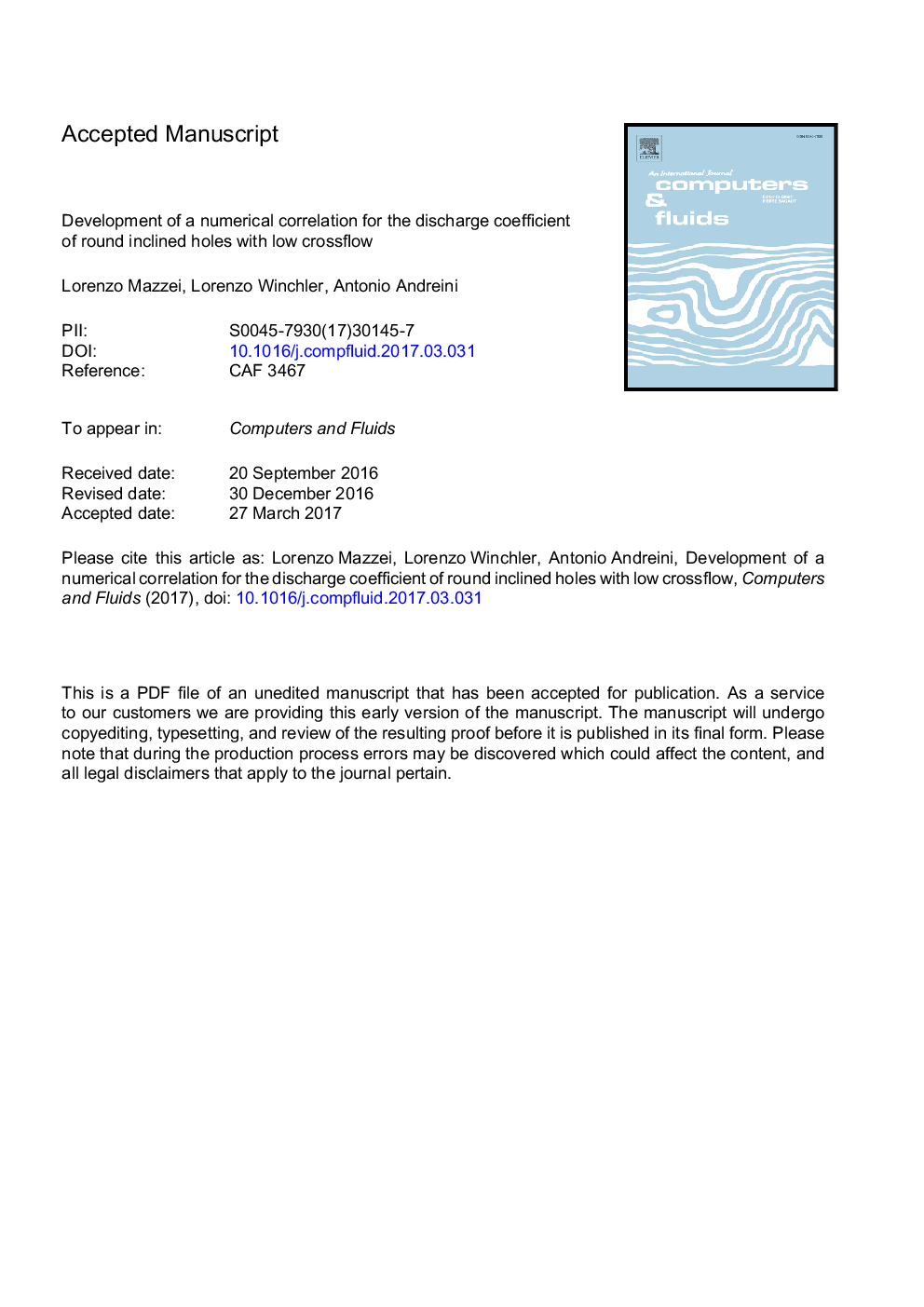| Article ID | Journal | Published Year | Pages | File Type |
|---|---|---|---|---|
| 5011801 | Computers & Fluids | 2017 | 31 Pages |
Abstract
In an effort to provide a general characterization of the aerodynamic losses across round orifices, an extended numerical campaign was carried out to develop a correlation for the discharge coefficient. The investigation was focused on round, inclined holes at isothermal conditions, with limited crossflow on both mainstream and coolant sides. Exploiting CFD simulations validated against a literature test case, a Design of Experiments (DoE) was performed to assess the influence of length-to-diameter ratio (L/d), inclination angle with respect to the crossflow direction (α) and pressure ratio (β). The large amount of data obtained were then correlated in order to provide an expression capable of predicting the discharge coefficient. The correlation is valid for round holes (α=20ââ90â,L/d=1â10,β=1.01â2.0) with low crossflow on both mainstream and coolant sides (Mam=Mac=0.02). allowing to reproduce the CFD data set with a mean absolute error of 3.44% and a standard deviation of 1.81%.
Related Topics
Physical Sciences and Engineering
Engineering
Computational Mechanics
Authors
Lorenzo Mazzei, Lorenzo Winchler, Antonio Andreini,
